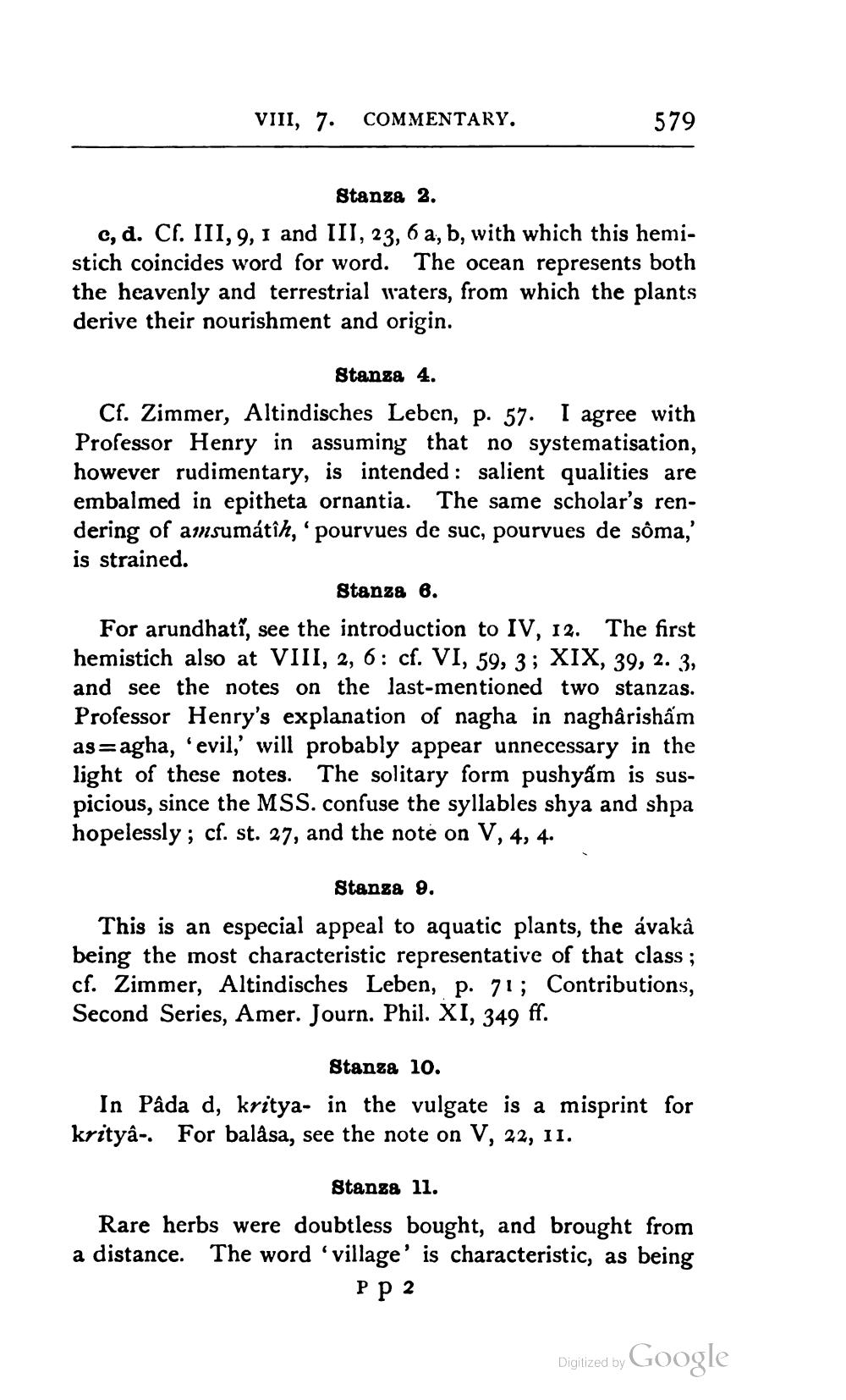________________
VIII, 7. COMMENTARY.
579
Stanza 2.
c, d. Cf. III, 9, I and III, 23, 6 a, b, with which this hemistich coincides word for word. The ocean represents both the heavenly and terrestrial waters, from which the plants derive their nourishment and origin.
Stanza 4.
Cf. Zimmer, Altindisches Leben, p. 57. I agree with Professor Henry in assuming that no systematisation, however rudimentary, is intended: salient qualities are embalmed in epitheta ornantia. The same scholar's rendering of amsumátîk, 'pourvues de suc, pourvues de sôma,' is strained.
Stanza 6.
For arundhati, see the introduction to IV, 12. The first hemistich also at VIII, 2, 6: cf. VI, 59, 3; XIX, 39, 2. 3, and see the notes on the last-mentioned two stanzas. Professor Henry's explanation of nagha in naghârishẩm as agha, 'evil,' will probably appear unnecessary in the light of these notes. The solitary form pushyam is suspicious, since the MSS. confuse the syllables shya and shpa hopelessly; cf. st. 27, and the note on V, 4, 4.
Stanza 9.
This is an especial appeal to aquatic plants, the avakâ being the most characteristic representative of that class; cf. Zimmer, Altindisches Leben, p. 71; Contributions, Second Series, Amer. Journ. Phil. XI, 349 ff.
Stanza 10.
In Pâda d, kritya- in the vulgate is a misprint for krityâ-. For balâsa, see the note on V, 22, 11.
Stanza 11.
Rare herbs were doubtless bought, and brought from a distance. The word 'village' is characteristic, as being
PP 2
Digitized by
Google




